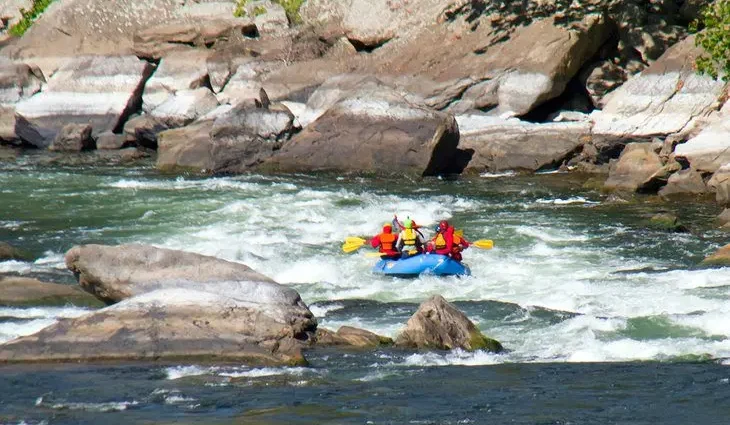Contents
White water rafting has been central to outdoor recreation in West Virginia for more than 50 years, making it one of the top states to experience the thrill of the rapids. Rafting enthusiasts flock to West Virginia because everyone, from beginners to experts, can find white water rapids that offer just the right adrenaline rush.
From float trips on the Lower New River to non-stop, heart-pumping Class IV and Class V rapids on the Upper Gauley River, this is white water rafting at its best. The New River is geologically one of the oldest rivers in the world.
Drop-pools intermix calmer water with intense rapids in different sections of the river. The upper part of the river consists of long pools and lighter rapids (up to Class III). The lower portion of the river has aggressive rapids in many areas, challenging even the most advanced rafter.
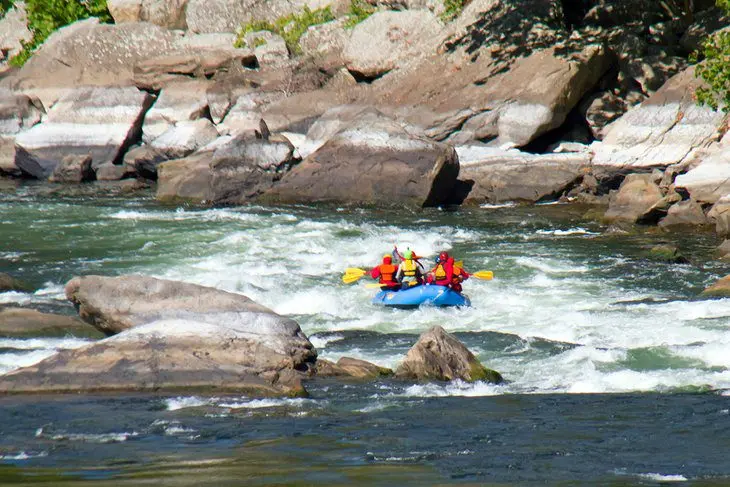
One of the reasons outdoor enthusiasts return to West Virginia for their white water fix is because with such diversity in the stretches of rivers, it is easy to step-up the adventure as your skills improve and your courage grows.
While the New River gets most of the attention for white water rafting in West Virginia, the Shenandoah River has unique characteristics that also appeal to rafting enthusiasts and to those who are just testing the waters.
White water rafting is so celebrated in West Virginia that in 2018, the Governor officially designated Gauley Season as the fifth “season” in the state. Plan your adventures with our list of the best white water rafting rivers in West Virginia.
1. Upper New River
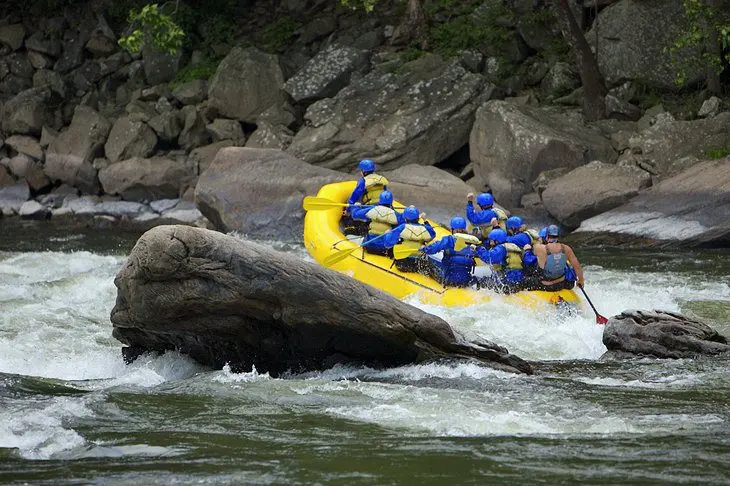
The Upper New River is the place to start if you have never been white water rafting or if you have a family and want to safely introduce children to the activity. This section of the river is characterized by calm water, and you will only encounter Class I and Class II rapids.
Many guided trips on the Upper New River are float trips that allow you to enjoy the scenery through the New River Gorge and not worry about fighting to stay in the raft through rough rapids. The Upper New River sits in a wide valley, which means shallower and slower water.
This enables you to learn and practice rafting techniques, so you know what to do should you choose to try a more aggressive trip the next time. Outfitters in the area provide all the equipment you will need, including paddles, helmets, and life jackets, and all provide safety demonstrations before guided trips.
The bonus to starting with the Upper New River is that you get to experience the New River Gorge National Park and Preserve, America’s newest national park. The slower float experience on the Upper New River enables you to do a bit more sightseeing of the stunning scenery surrounding you in the New River Gorge.
2. Lower New River
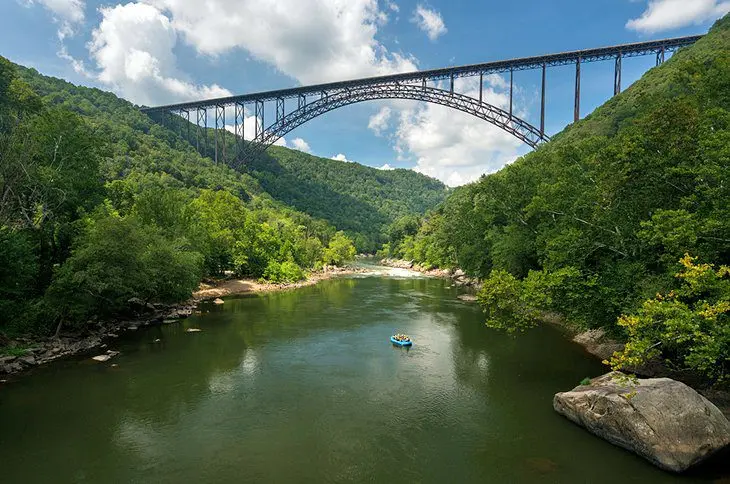
The New River Gorge is probably the most popular river for white water rafting in West Virginia, and the Lower New River, in particular, is one of the most popular stretches for white water rafting. The Lower New River has a comfortable mix of long, calm pools of water and also Class IV rapids.
Many intermediate rafters like this stretch of river because you get the thrill of intense rapids with time to recover. The Lower New River is deeper, with rapids created by steep drops between large boulders. The intensity of the rapids depends on the season.
Springtime is the most adventurous, when snowmelt and spring rain bolster the river’s volume, creating monster waves. From April through mid-June, you’ll find intense trips that finish off with an eight-mile Class V rapid.
A trip along the Lower New River takes you beneath the 876-foot-high New River Gorge Bridge. Late fall is an especially picturesque time to visit. Every October, rafting trips are scheduled around the annual Bridge Day, when BASE jumpers are permitted to leap from the bridge to the landing below.
3. Upper Gauley

There’s a reason the Upper Gauley is ranked as one of the top five rivers to raft in the world. It is heart-pumping extreme white water rafting at its best. The river provides non-stop action, with consistent Class IV and Class V rapids that drop you more than 335 feet in a 13-mile stretch. This trip is for experienced rafters only.
While the exhilaration is unmatched, it is an aggressive and exhausting trip that requires precision and skill to endure the intense 60-plus rapids. You will experience the “Big 5” on this river, which is a series of steep, consistent, voluminous Class V rapids, in between large boulders, that will take your breath away.
The ultimate adrenaline rush on the Upper Gauley is in the fall during what is referred to as “Gauley Season.” This is when water is released from Summersville Dam, creating the most intense white water of the year. If you go in late October, plan on a wet suit and water shoes. It will be the most adrenaline-filled experience of your life, and possibly the coldest.
4. Lower Gauley
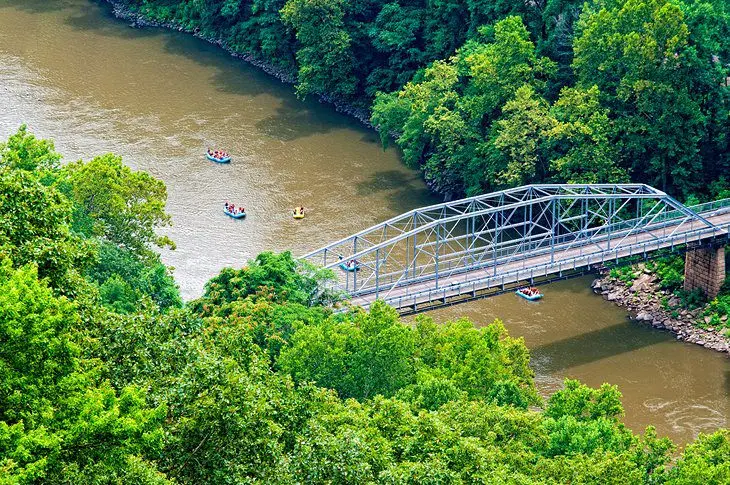
The Lower Gauley is not as consistently intense as the Upper Gauley but it offers an extreme adventure with Class III to Class V rapids. Though there are 70 rapids, you get the best mix of adrenaline and relaxation on this stretch of water.
In between the sections of rapids, this 17-mile stretch of river has calmer pools, so you can float and swim for part of the trip. The Lower Gauley, while considered extreme, is best for intermediate rafters, who want to kick things up a notch and for those who want some time to turn their heads and enjoy the scenery.
True adventure seekers can combine the Upper Gauley and Lower Gauley into one trip. The most popular time for this trip is in the fall. The Upper Gauley water in the months of September and October is especially intense. It can also be quite cold, so plan on wearing a wetsuit and be ready for a memorable trip.
5. Cheat River

The Cheat River runs through the eastern side of West Virginia and into southwestern Pennsylvania and has some nice white water rafting. There are two main sections of the Cheat River where white water rafting happens. The Cheat Narrows is a milder run, with Class II-III rapids. The rafting trips along this stretch allow for swimming and rock jumping on many of the guided trips.
The Cheat Canyon is a 13-mile section, with rushing water and Class V white water rapids that flow through the valley of the Appalachian mountains. The Cheat Canyon is surrounded by steep mountains, so the picturesque views are as magnificent as the rafting experience.
6. Shenandoah River
The Shenandoah River does not get as much attention for white water rafting as the New River, but it is worth consideration if you are looking for a new white water adventure. It’s near Harpers Ferry, West Virginia, where the Shenandoah River meets the Potomac River.
The result is a 6.5-mile white water adventure that takes you through the Blue Ridge Mountains and past the Harpers Ferry National Historical Park. White water rafting on the Shenandoah River is suitable for beginners and family trips, as you will find calmer water with Class I to Class III rapids.
This trip is slower paced and a shorter time commitment. You can do this trip in approximately three hours.
Tips for Beginners
If you are new to the white water rafting experience or have never tried it, the idea of navigating class IV rapids can be intimidating. Your best bet is to find a reputable outfitter that offers a variety of trips to suit every skill level, and begin with a basic float trip to get a feel for the river system.
Once you feel comfortable with the equipment, duration of trips, and the environment, plan to step up a level for your next trip and try class II and class III rapids. You will get a sense of the power of the water and improve your skills as you navigate rapids that are easier to manage and get more comfortable with the experience.
When it comes to white water rafting, it is essential to feel comfortable and honest about your skill level. The wild river systems offer the most thrilling and aggressive outdoor experiences you can have, but if you are not ready to handle the extreme rapids you can end up in a dangerous situation.
Start slow, discuss your concerns and skill level with your outfitter, and make the most of enjoying some of the best white water rafting in the United States in West Virginia.
Map of White Water Rafting Rivers in West Virginia
More Related Articles on PlanetWare.com
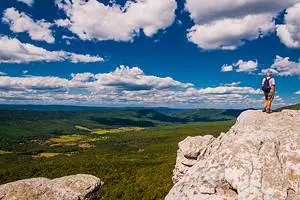
West Virginia Adventures: If are spending more time in the state and wondering how to spend your time, see our list of the top attractions in West Virginia. You might want to plan a few more days to enjoy some of the other types of outdoor adventures in this scenic playground.
Options range from hiking, trout fishing, and skiing to city adventures in places like the capital of Charleston with activities that can fill an entire week.

Where to Stay in West Virginia: Lodging is easy to find throughout West Virginia depending on your desired experience and budget. Private cabins and camping near some of the parks offer a rustic adventure, or you can find mainstream hotels in the towns.
There is also a range of resorts throughout the state that offer packages, which include lodging and activities. To narrow down your choices see our article: Top-Rated Resorts in West Virginia.










